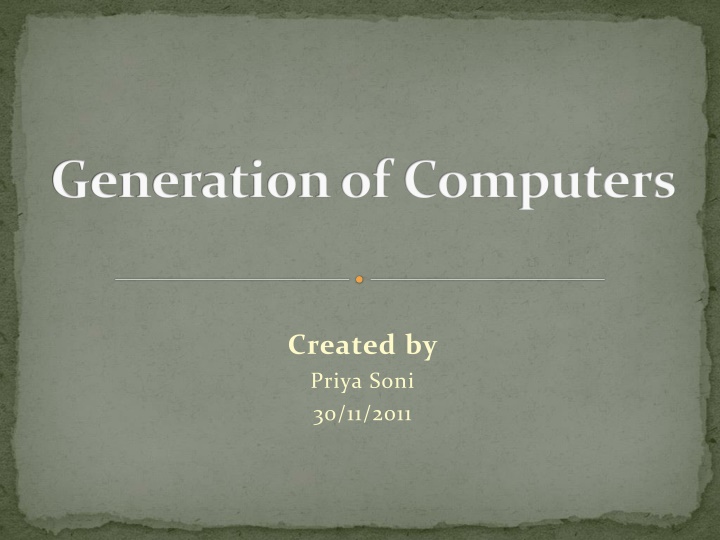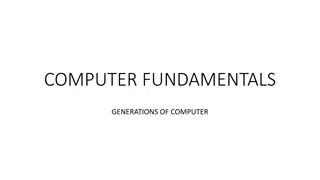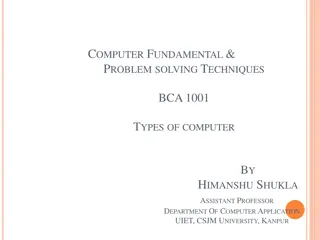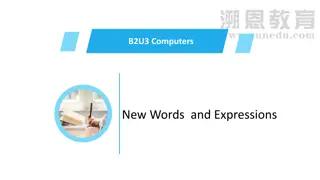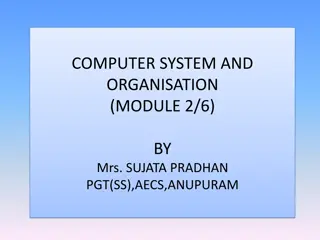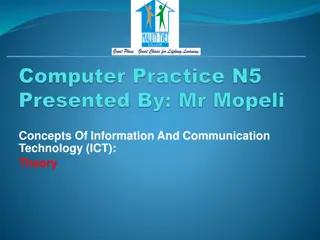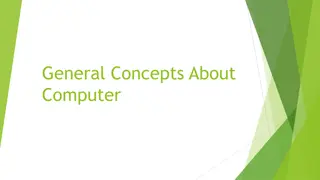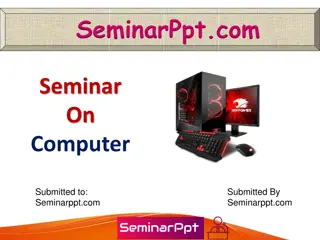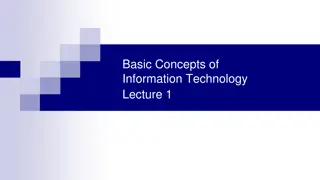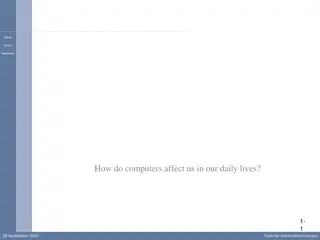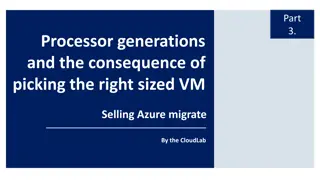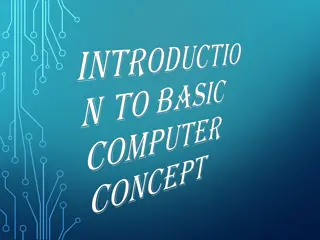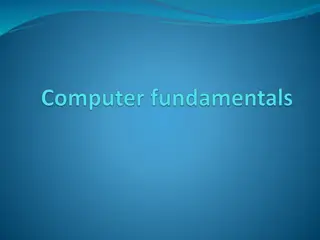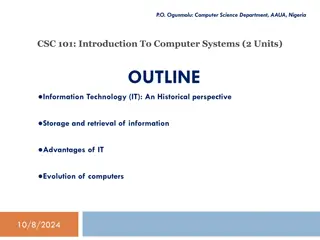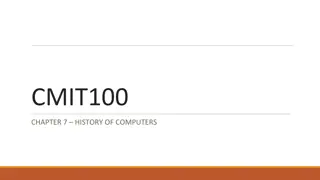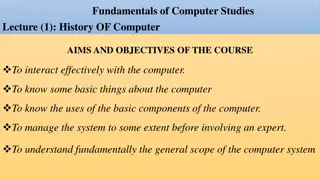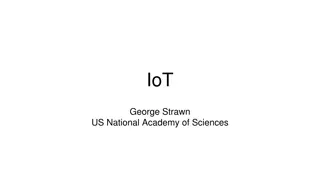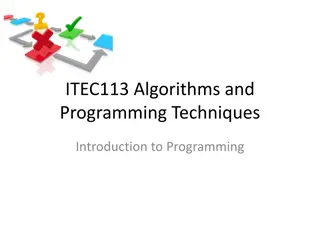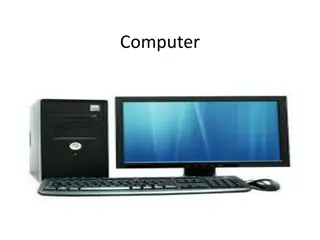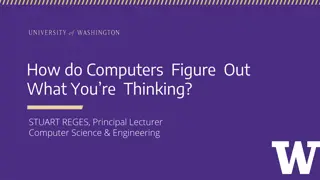Evolution of Computers: Generations and Advancements
Trace the evolution of computers through different generations from vacuum tube-powered behemoths to modern-day compact devices. Explore the features, advantages, and disadvantages of first-generation computers along with the advancements in second-generation computers with transistors. Dive into the historical development, size, main components, input/output media, and storage media of each generation. Understand the impact of technological innovations on the evolution of computing devices over time.
Download Presentation

Please find below an Image/Link to download the presentation.
The content on the website is provided AS IS for your information and personal use only. It may not be sold, licensed, or shared on other websites without obtaining consent from the author.If you encounter any issues during the download, it is possible that the publisher has removed the file from their server.
You are allowed to download the files provided on this website for personal or commercial use, subject to the condition that they are used lawfully. All files are the property of their respective owners.
The content on the website is provided AS IS for your information and personal use only. It may not be sold, licensed, or shared on other websites without obtaining consent from the author.
E N D
Presentation Transcript
Generation of Computers Created by Priya Soni 30/11/2011
Generation of Computers Computers can be classified into five types according to the generations i.e. time period: First Generation Computers Second Generation Computers Third Generation Computers Fourth Generation Computers Fifth Generation Computers
First Generation Computers Period: 1946-54 Size was equivalent to a room Machine and Assembly language Vacuum Tubes Punched cards & paper tape Magnetic drum & Magnetic tape Size: Language: Main Component: Input/output Media: Storage Media:
First Generation Computer Advantages : . It was only electronic device . First device to hold memory Disadvantages : . Too bulky i.e. large in size . Vacuum tubes burn frequently . They were producing heat . Maintenance problems
Second Generation Computers Period: 1955-64 Smaller than 1st generation Assembly & high level language Transistors Punched cards & printed Size: Language: Main Component: Input/output Media: reports Storage Media: Magnetic tape & magnetic disk
Second Generation Computer Advantages : . Size reduced considerably . The very fast . Very much reliable Disadvantages : . They over heated quickly . Maintenance problems
Third Generation Computers Period: 1965-74 Disk size mini computers High level language ICs (Integrated Circuits) Key to tape, key to disk & printed reports Magnetic tape & magnetic disk Size: Language: Main Component: Input/output Media: Storage Media:
Third Generation Computer Advantages : . ICs are very small in size . Improved performance . Production cost cheap Disadvantages : . ICs are sophisticated
Fourth Generation Computers Period: 1975-89 Typewriter size micro computers High level language ICs with LSI (Large Scale Integration) Keyboard data entry, input devices & printed reports Magnetic disk, floppy & optical disk Size: Language: Main Component: Input/output Media: Storage Media:
ICs with LSI (Large Scale Integration)
Fourth Generation Computer Advantages : . It is a compact . Less power consumption . Production cost is cheap Disadvantages : . No artificial intelligent.
Fifth Generation Computers Period: 1990 s- present & beyond Credit card size micro computers Artificial intelligence language SLSI/ULSI (Super/Ultra Large Scale Integration) Tactile inputs, displays Optical disk & card magnetic disk Size: Language: Main Component: Input/output Media: Storage Media:
Fifth Generation Computer Advantages : . Artificial intelligence . Expert system . Very low cost
. First generation computer Vacuum tubes . Second generation computer Transistors . Third generation computer ICs . Fourth generation computer ICs with VLSI . Fifth generation computer ICs with parallel processing
